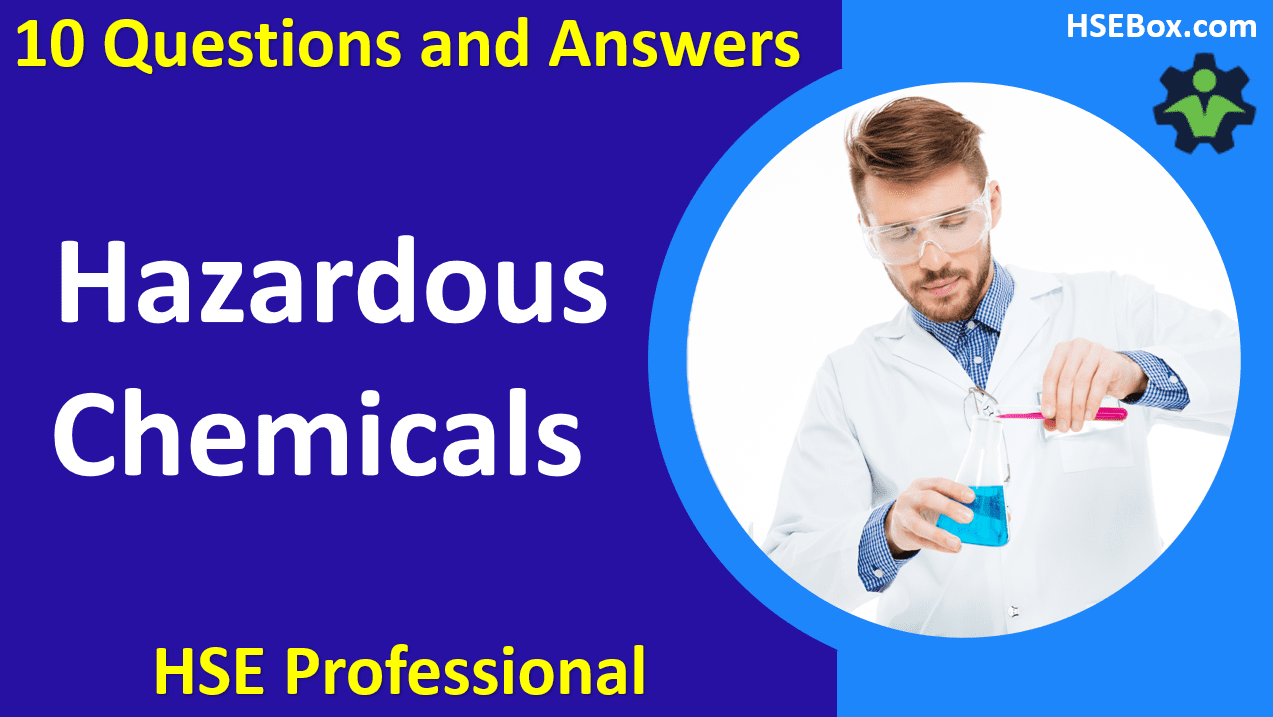Safety in the workplace is of paramount importance, especially when dealing with hazardous chemicals and substances. Employees who handle, store, or come in contact with such materials need to be aware of the risks and best practices to prevent accidents and protect themselves and others. Here are 10 frequently asked questions and their answers that focus on workplace safety guidelines and best practices for handling hazardous chemicals and substances.
Question number 1. What are hazardous chemicals and substances in the workplace?
Hazardous chemicals and substances in the workplace refer to any substances that can pose a threat to health, safety, or the environment. This includes toxic, flammable, corrosive, and reactive substances, as well as carcinogens, mutagens, and teratogens.
Question number 2. What are the potential risks of handling hazardous chemicals and substances in the workplace?
The potential risks of handling hazardous chemicals and substances in the workplace include exposure through inhalation, ingestion, or skin contact, which can lead to acute or chronic health effects. Other risks include fire, explosions, and environmental pollution.
Question number 3. What are some guidelines for storing hazardous chemicals and substances in the workplace?
Guidelines for storing hazardous chemicals and substances in the workplace include storing them in designated, well-ventilated areas away from heat, sparks, and open flames. They should be properly labeled, and incompatible substances should be stored separately to prevent reactions.
Question number 4. How can employees protect themselves from hazardous chemicals and substances in the workplace?
Employees can protect themselves from hazardous chemicals and substances in the workplace by wearing appropriate personal protective equipment (PPE) such as gloves, goggles, and respirators. They should also follow proper handling procedures, avoid eating or drinking in work areas, and practice good hygiene, such as washing hands thoroughly after handling chemicals.
Question number 5. What should be done in case of a chemical spill or release in the workplace?
In case of a chemical spill or release in the workplace, employees should immediately evacuate the area and notify their supervisor or the designated emergency response team. They should avoid breathing in fumes or coming in contact with the spilled material and follow established spill response procedures.
Question number 6. Are there any specific regulations or standards that govern the handling of hazardous chemicals and substances in the workplace?
Yes, there are several regulations and standards that govern the handling of hazardous chemicals and substances in the workplace, including the Occupational Safety and Health Administration (OSHA) Hazard Communication Standard (HCS), which requires employers to provide information and training on hazardous chemicals, as well as the Globally Harmonized System (GHS) for the classification and labeling of chemicals.
Question number 7. How often should employees receive training on the handling of hazardous chemicals and substances?
Employees should receive training on the handling of hazardous chemicals and substances at the time of initial assignment and whenever new hazards are introduced. Refresher training should also be provided periodically, at least annually, or when there are changes in work procedures or chemicals used.
Question number 8. What are some best practices for transporting hazardous chemicals and substances in the workplace?
Best practices for transporting hazardous chemicals and substances in the workplace include using appropriate containers that are properly labeled, securing them during transport to prevent tipping or spilling, and following established routes and procedures. Employees should also be trained in emergency response procedures in case of accidents during transport.
Question number 9. What should be included in a hazardous chemical inventory in the workplace?
A hazardous chemical inventory in the workplace should include a list of all hazardous chemicals and substances used or stored in the workplace, their location, quantity, and hazard information.
Question number 10. What are some best practices for the disposal of hazardous chemicals and substances in the workplace?
Best practices for the disposal of hazardous chemicals and substances in the workplace include following local, state, and federal regulations for proper disposal methods, using designated disposal containers or facilities, and ensuring that disposal procedures do not pose a risk to employees, the environment, or the public.
Conclusion:
Workplace safety when dealing with hazardous chemicals and substances is critical to prevent accidents and protect employees and the environment. By following guidelines and best practices for handling, storing, transporting, and disposing of hazardous materials, employees can reduce the risks associated with these substances. Regular training, proper use of personal protective equipment (PPE), and adherence to regulations and standards such as OSHA’s Hazard Communication Standard (HCS) and the Globally Harmonized System (GHS) can help create a safer work environment when working with hazardous chemicals and substances. Remember, safety should always be the top priority in any workplace where hazardous chemicals and substances are present.
Important Note: It is important to consult and comply with local, state, and federal regulations regarding hazardous chemicals and substances in the workplace, as regulations may vary depending on the jurisdiction and type of industry. Always seek professional advice and training when dealing with hazardous materials.
Download Now for FREE!!
Available only for all registered Users, does not require any payment to download.
| Title | |||
|---|---|---|---|
|
Mechanical power transmission apparatus 1 513 downloads |
Checklist, Free Files | October 21, 2022 | Please login to download |
|
Machine guarding 1 513 downloads |
Checklist, Free Files | October 21, 2022 | Please login to download |
|
HEALTH AND SAFETY MANUAL 1 13452 downloads |
Free Files, Learning/Training | October 14, 2022 | Please login to download |




